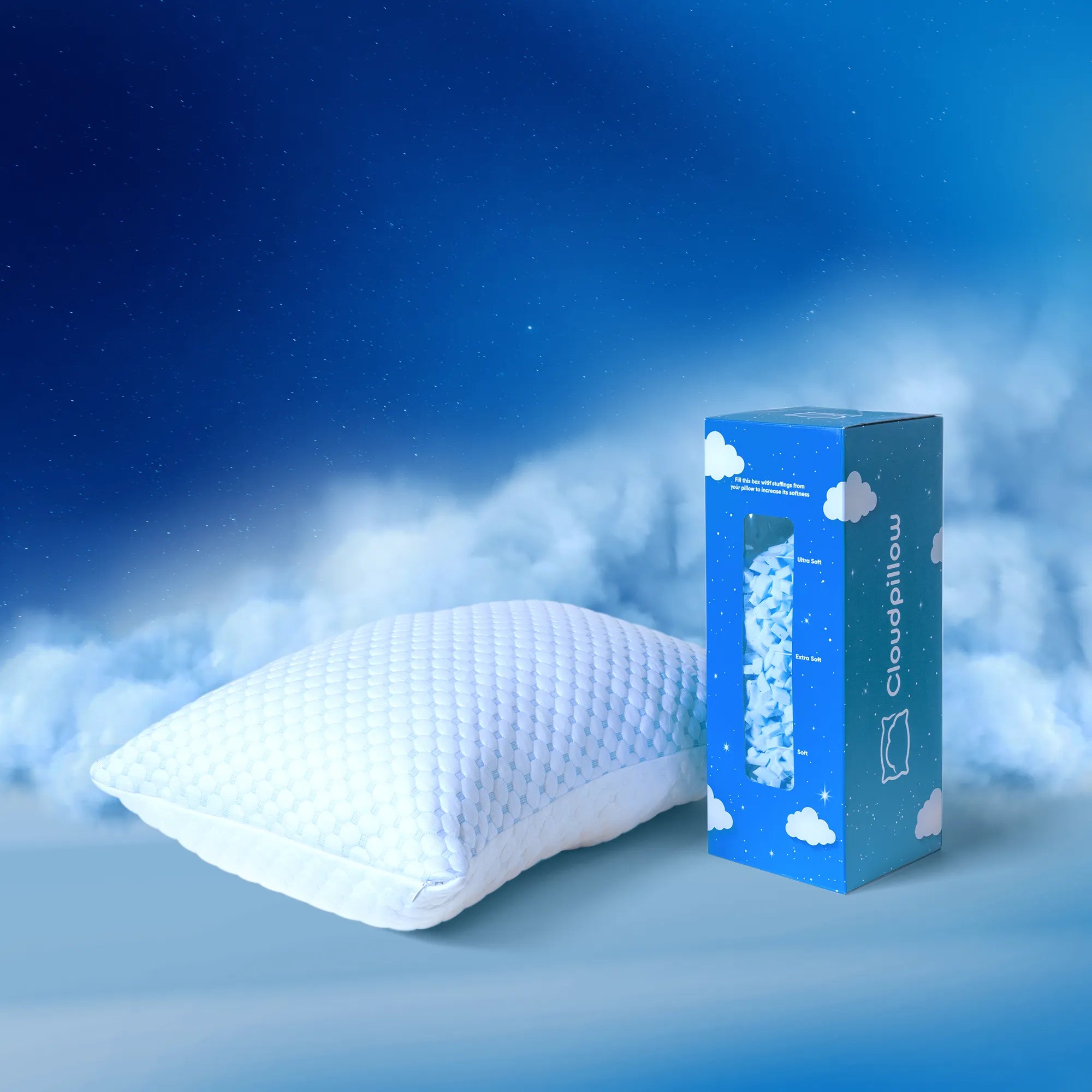How Often Should You Replace Memory Foam Pillows

Memory foam pillows offer comfort and support for restful nights, but like all good things, they have a lifespan. If you're wondering when to bid farewell to your trusty memory foam companion, we've got you covered. Let's explore the signs that indicate it's time for a pillow upgrade, and how proper care can stretch their life.
Reasons You May Want to Replace Your Memory Foam Pillow
Filthier Than Expected
Over time, even some memory foam pillows can harbor dust mites, allergens, and sweat. Even with pillowcases, particles sneak through. If your memory foam pillow seems filthier than expected despite your best efforts, it might be time for a fresh start.
The Pillow is Clearly Past Its Prime
Memory foam pillows lose their original shape and support as they age. If you notice your adjustable pillow looking flat and not bouncing back, it's a clear sign that its prime has passed.
Time for a Fresh Mattress
A new mattress can change your sleep dynamics, and your pillow with memory foam should adjust accordingly. If you've upgraded your mattress, consider upgrading your memory foam pillow too for consistent support.
Why it’s Important to Replace Pillows
Sleep quality isn't just a luxury; it's a crucial aspect of overall well-being. And guess what? Your pillow has a significant impact on that quality. As your trusted sleep companion, your pillow influences not only how you feel in the morning but also your long-term health. Let's delve deeper into why replacing pillows is more than just a recommendation – it's a key factor in elevating your sleep experience.
Imagine your pillow as the foundation of your sleep sanctuary. Its purpose goes beyond mere cushioning; it directly affects your neck alignment and spinal support. A well-maintained pillow ensures that your head, neck, and spine are in proper alignment, reducing the risk of waking up with aches or discomfort. As pillows age, they lose their original shape and supportive qualities. This can lead to misalignment, which not only disrupts your sleep but can also contribute to chronic issues over time.
How Often Should You Buy a New Pillow?
Generally, memory foam pillows last around 2-3 years. However, individual factors like usage, body weight, and care practices can influence their lifespan. If your memory foam pillow starts showing signs of wear and tear before the 2-year mark, it's time to consider a replacement.
Memory Foam Pillow Care and Replacement Guidelines
Caring for your memory foam pillow not only extends its life but also enhances your sleep quality. Regularly fluffing and airing out your pillow helps maintain its loft and freshness. Additionally, using pillow protector shields against spills and allergens will keep your pillow cleaner for longer.
Recognizing the Right Time to Replace Pillows
Lost shape
If your pillow resembles a pancake more than a pillow, it's time for a change. Memory foam pillows are designed to retain shape, and losing that support indicates replacement.
Waking up with neck or head pain
If you find yourself waking up with discomfort or pain, your pillow with memory foam might be the culprit. An old memory foam pillow loses its ability to properly cradle your head and neck, leading to aches.
Skin irritation, itchiness, sneezing
Allergens and dust mites love pillows. If you're experiencing skin irritation, itchiness, or frequent sneezing when you lay down, it's a sign that your pillow's hygiene might have seen better days.
Stains on the pillow
Stains are more than cosmetic; they can harbor bacteria and allergens. If your memory foam adjustable pillow has stubborn stains that won't go away, it's time to say goodbye.
How to Make Your Pillows Last as Long as Possible
Establish a Regular Pillow Washing Routine
Follow the care instructions for your memory foam pillow. Most can be spot-cleaned or gently hand-washed. Ensure they're completely dry before using them again.
Act Promptly to Prevent Stains from Setting on the Pillow
Accidents happen. If a spill occurs, act quickly to prevent stains from setting. Blot liquids gently and avoid rubbing, which can push the liquid deeper into the foam.
Enhance Protection with a Pillow Protector in Addition to Your Pillowcase
Invest in a quality pillow protector. It acts as a barrier against dirt, dust mites, and spills, keeping your memory foam pillow cleaner for longer.
Avoid Placing a Moist Pillow Inside a Pillowcase
Make sure your pillow is thoroughly dry before covering it with a pillowcase. Moisture can cause mold to grow.
Final Thoughts
Your memory foam pillow is your sleep companion, offering comfort and support night after night. Understanding when it's time to replace it ensures you continue enjoying restful sleep and proper spinal alignment. By recognizing the signs and adopting good care practices, you can extend the life of your memory foam pillow and reap the benefits of a well-rested you.
Frequently Asked Questions
-
How long do memory foam pillows typically last?
Memory foam pillows generally last around 2 to 3 years, but factors like usage, care, and quality can influence their lifespan.
-
Can I extend the life of my memory foam pillow with proper care?
Absolutely! Regular fluffing, using a pillow protector, and following care instructions can help prolong your memory foam pillow's lifespan.
-
Is it necessary to replace memory foam pillows even if they look clean and intact?
Yes, it's recommended. Memory foam pillows lose their supportive qualities over time, affecting your sleep comfort even if they appear clean and intact.
-
Does the quality of the memory foam pillow impact its longevity?
Yes, higher-quality memory foam pillows tend to last longer due to their durability and better support retention.
-
Can a pillow protector help prolong the life of my memory foam pillow?
Absolutely. A pillow protector acts as a barrier against dirt, allergens, and spills, keeping your memory foam pillow cleaner and extending its lifespan.
Summary






